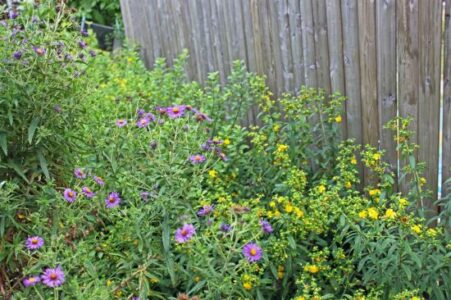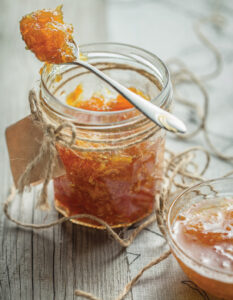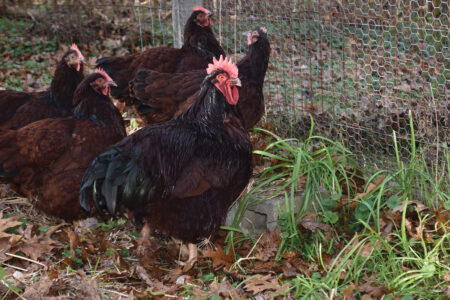When I was an urban gardener, I was seriously into native plants and wildflowers (as you can see from the pictures included here). During my first few years at Panther’s Hollow, I’ve somewhat neglected this important aspect of my gardening activities. First of all, there’s already such an abundance of native wildflowers and shrubs around the edges of my property. Then, I haven’t had the budget to invest in more nursery plants, and I’ve been focused on establishing vegetable beds and fruiting plants. Still, I’ve been realizing more the need to have enough flowering plants to keep pollinators and other beneficial insects in and around the garden. So I’m currently ramping up my efforts.
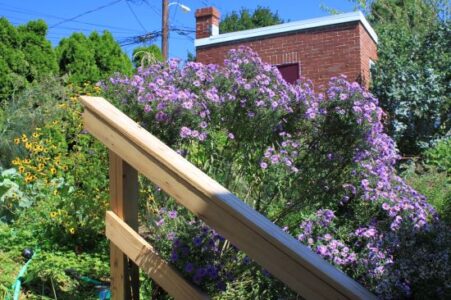
In the fall of 2014, I sowed several plots with a variety of wildflowers — purple and yellow coneflowers, red milkweed, ox-eye sunflowers, New England asters, false indigos, Culver’s roots, brown-eyed Susans, bergamot, wild senna, and maybe others — with disappointing results. The first year, all that came up were a few red milkweeds and one purple coneflower!
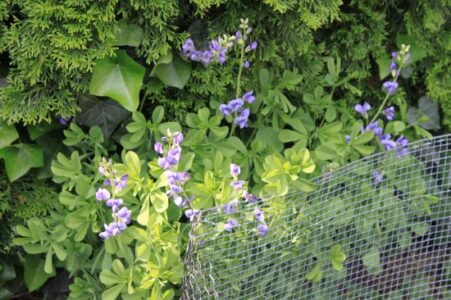
I hadn’t done a very good job of eliminating weed competition, and I was hoping that many of the seeds were just lying dormant in the soil and would germinate in a later season. Sure enough, late this summer I found several new plants of different species had emerged in one of the plots — New England asters, bergamot, a Culver’s root or two, and purple and yellow coneflowers. Meanwhile, I had given in and ordered three false indigo plants from Prairie Nursery — a white, a blue, and a cream — which I planted in one of the plots where nothing had come up. Imagine my delight when, later in the season, I noticed other false indigos that had emerged in the same plot — holdovers from my 2014 planting.
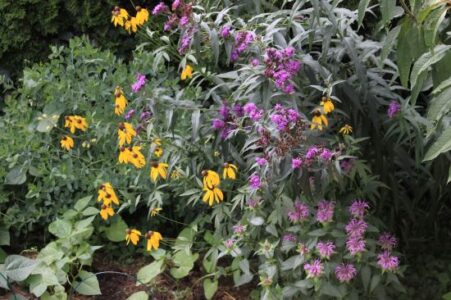
I wrote earlier about the boneset plants I grew from seed that I collected from the stream bank, which bloomed stupendously in a wet spot in the garden. Now I plan to sow more of them next to the house and next to the garage where water drains off the roof. So I’m looking forward to having an abundance of wildflowers in a few years. Meanwhile, I thought I’d share a few more photos of my urban garden:
